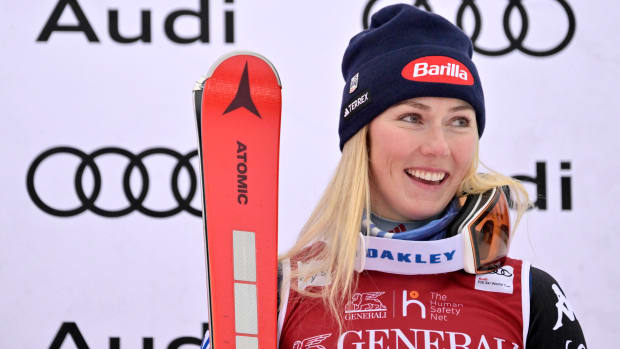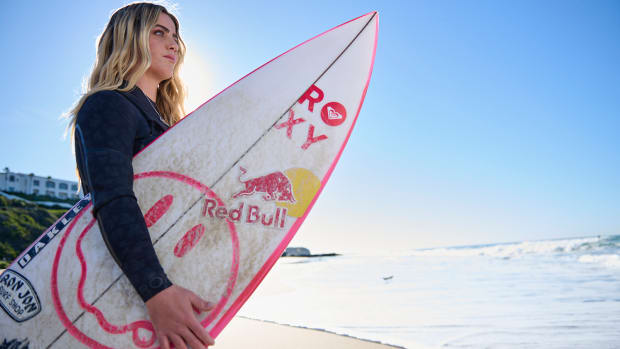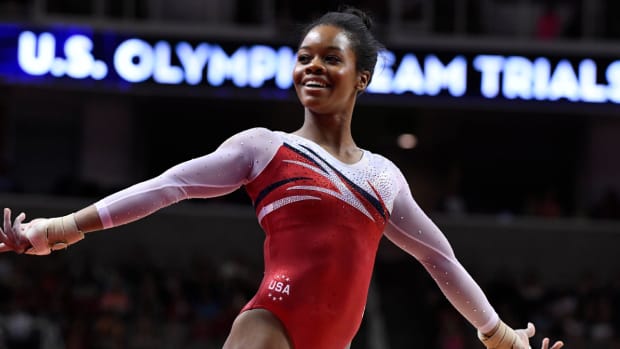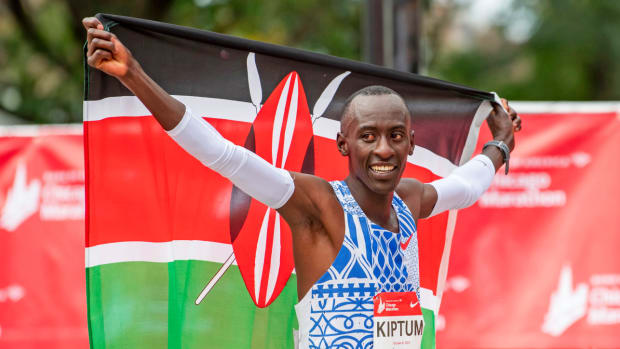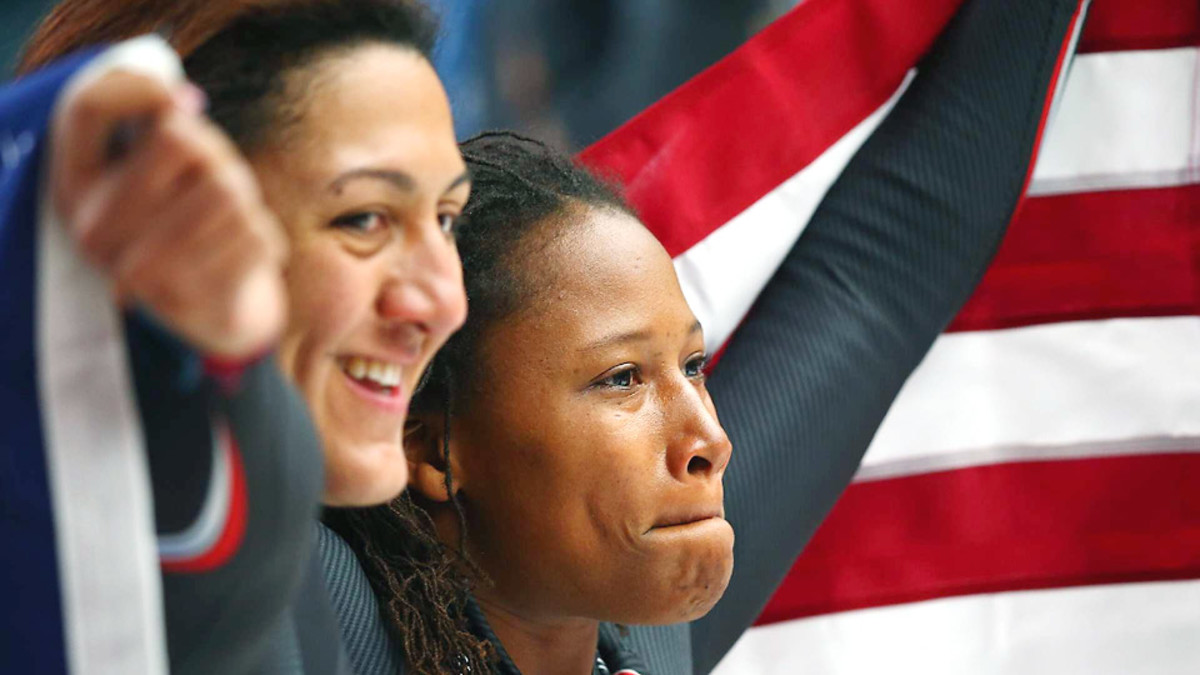
Good, but not quite great, night as U.S. women's bobsled takes silver, bronze
KRASNAYA POLYANA, Russia -- Elana Meyers kept saying it -- “I couldn’t be happier” -- but it never rung completely true.
Meyers is the pilot for Team USA’s silver-medal-winning women’s bobsled. In unguarded moments, before the flowers ceremony, then in the mixed zone, her expression was, if not quite despondent, well south of happy. It was a very, very good night for USA bobsledding. But it was .10 seconds from being great.
Rest easy, all you living heirs of Eddie Eagan, the Olympian not to be confused with British ski-jumper Eddie (the Eagle) Edwards. Eagan, unlike the Eagle, had serious game -- make that games. He remains the only person ever to win a gold medal at both the Summer and Winter Olympics in different events. He boxed his way to gold as a light-heavy in 1920 in Antwerp. Twelve years later, he was a member of America’s gold-medal-winning bobsleigh team in Lake Placid.
Eighty-two years after that, on Wednesday night at the Sanki Sliding Center, Eagan survived -- barely -- the greatest threat to his singular status.
Lauryn Williams, a 5-foot-7, 130-pound bundle of fast-twitch fibers, exploded off the starter’s block in tandem with Meyers. Williams, a gold medalist in the 4 x 100m relay at the London Olympics, is the brakeman on that sled.
After three trips down this kinked, technical, 17-curve, 2000-meter track, the Americans held a .11-second lead on the Canadian team of driver Kaillie Humphries and Heather Moyse. To hold the lead and take the gold, Williams and Meyers needed a final run of 58.03 or faster.
But after a typically surging start -- that’s why Williams was recruited from track and field seven months ago -- things soon went sideways.
Meyers, who honed her cat-quick reflexes playing fast-pitch softball at George Washington University, is among the better pilots in the world. But all drivers struggle with certain sections of some tracks. Meyers’ bugaboo this week, she allowed, was Turn 2. While not as dramatically banked as the Petersen Curve below, it is a tight, nearly 90-degree right turn.
With a gold medal on the line and very little margin for error on the last run of the night, Meyers erred.
“That really killed our speed,” she said later. “I was fighting it the rest of the way down, trying to get it back, but when you make that mistake at the beginning of the track, it’s hard to hold it together.”
Driving a bobsled at 90 mph is such a ridiculously tough job, such a test of nerves and reflexes, that it would be small-minded to point out the various instances further down the line that USA-1 caromed or ricocheted or pinballed off the walls. Suffice it to say that if those walls had been electrified, the Americans would have emerged with singed eyebrows.
The Canadians took the gold by a tenth of a second. Eddie Eagan’s place in Olympic history remained secure.
But for how long? Asked if she planned to keep pushing and sliding for another four years, Williams replied, “I plan on having pizza tonight. That’s about as far as I’ve gotten in the planning process.” Later, she allowed that she’d confided in “E” – her sobriquet for Elana – that there was “a 33-percent chance” Williams would be back.
It’s not as if the team’s coaches would have to look far for her replacement. Aja Evans, a former thrower for the University of Illinois track team and the sister of Vikings defensive end Fred Evans, had great success as Meyers’ pusher until the USA coaches made the controversial decision to replace her with the neophyte Williams.
“It was a little hard to understand at first,” Evans admitted after pushing America’s No. 2 sled to a bronze medal. “I’ve had a lot of success with Elana. Five medals --- two golds and three silvers in the World Cup season. So it was weird.”
Team USA’s third-string brakeman and the final selection for this six-woman team, was Lolo Jones, who had the lowest U.S. placing -- she and pilot Jazmine Fenlator came in 11th -- and the sunniest disposition afterward.
Even as she slid down the depth chart, so to speak, Jones found happiness and found a community with her fellow sliders in a way she never did in the world of track and field. She found it, she said, by “working with six other girls, non-stop, learning how to work with their differences, [to] lift them up if they’re not performing well, just be their teammate.”
One of the themes of these games is that Jones has learned the true meaning of teamwork, of subjugating her wishes for the good of the group. Why else would she have recruited Williams, her fellow track star, to join the team, knowing the ex-Miami Hurricane might leapfrog her, as did, indeed, happen.
“The lesson in humbleness is definitely gold for sure,” she said. And while it’s true the sight of throngs of reporters hanging on the words of the brakeman of the 11th place team might make one question how much humility she’s actually learned, Jones sounded sincere. As did her teammates when they talked about how much they like her and respect her work ethic.
We don’t know who will push Team USA’s No. 1 sled in South Korea in 2018. We do know who will be driving. The leader and spiritual leader and soul of this program is Meyers, who owned her (modest) failure on that fourth run.
“At the end of the day, Kaillie beat me,” she said. “And I have to deal with that, I have to go back and train even harder for Pyeongchang. And we’ll see what happens.”
In the meantime, she was going to enjoy this night. “At the end of the day I’m super elated for this medal.”
Absent on her face as she spoke? Any trace of elation. But give it four years.
WOLFF: Once nearly blind, suicidal, Holcomb drives U.S. to historic bobsled medal
